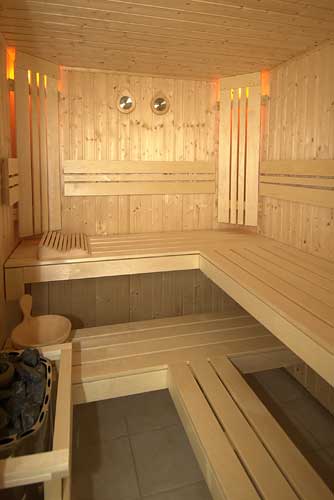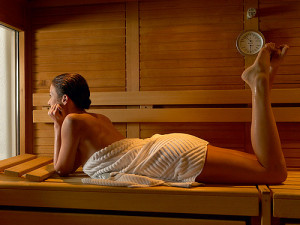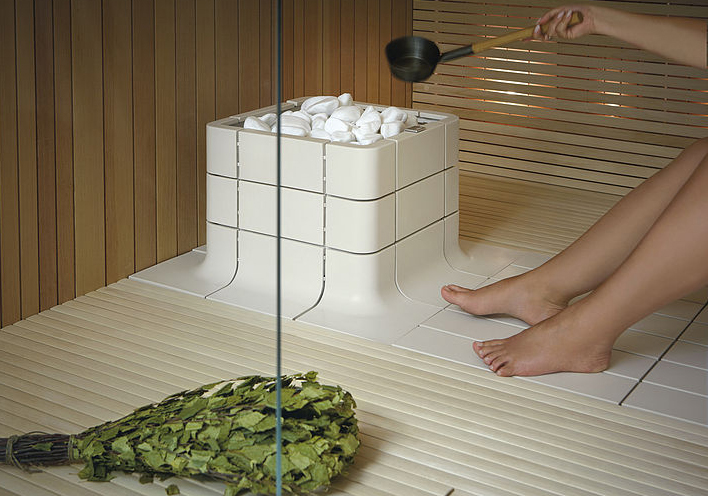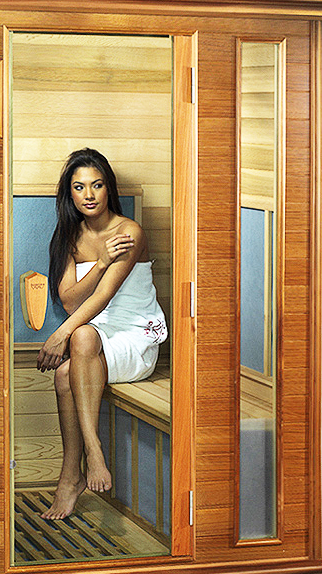Countries all over the world use saunas as a way to de-stress, cleanse, and improve their health, and every country that does approaches the sauna process a little differently. In the US, we have a relatively young sauna culture, but there are some vestiges of a sauna culture, with some regions having rather pronounced traditions.
Overall Sauna Practices in the US
Saunas in the US tend, overall, to be less communal than their European cousins, with people having private saunas in their homes or using gym or spa saunas that require memberships. These saunas may allow or require nudity (and certainly, do as you will in your home sauna), but many will require users to wear towels, swim suits, or robes. In many gyms, people will even wear their workout clothes.
While this type of sauna use can be considered "typical", there are areas of the US with markedly different sauna cultures.
Sweat Lodges
While Finnish-style saunas are fairly new to the US, sweat lodges have been in use for centuries. Unlike a sauna, a sweat lodge (or sweat house) is often dome-shaped. Like a sauna, sweat lodges are used as a way of purifying the body.
Use of sweat lodges is often highly ceremonial in nature. As part of that ceremonial culture, intensive training lasting many years is often required before someone is permitted to lead a lodge. This training includes learning prayers in the indigenous language of that culture, as well as safe practices for conducting the lodge.
While using a sweat lodge, people will usually wear a simple garment. Women often wear skirts and t-shirts or short-sleeved dresses. In some cases, the genders are separated.
In some traditions, sweat lodges must be used in complete darkness.
The Saunas of the Lake Superior Region
When immigrants from Finland arrived in America, local natives called this "sweat lodge men" or "white-men-like-us" because of their use of saunas. These Finnish immigrants settled large communities in Northern Michigan, Wisconsin, and Minnesota and established a sauna culture that resembles the one they left behind in Finland. Many of these traditions are preserved today, while some new cultural practices have been added.
Throughout the Lake Superior Region, saunas are regular fixtures as out buildings. Often situated near lake houses or cottages, there are also saunas in use by entire neighborhoods. While private saunas are very popular in the US, the Lake Superior Region retains a sense of community around many of their saunas, and sauna use is a part of their everyday life, not just an occasional luxury.
Saunas in Los Angeles and the Larger California Area
The large coastal cities of California are home to large populations of people from across Asia, and one group in particular brought with them their own unique sauna culture. Korean saunas date back to a time when most Koreans didn't have their own bathrooms, and so members of a community would gather at bathhouses to cleanse and socialize. These jimjilbang have now crossed the ocean and are popular among Americans who have access to them.
These new-world Korean saunas often resemble Western spas in many aspects, but all have a uniquely Korean feature: a very large room where everyone can gather to eat, watch tv, sleep, or read. This communal area is the heart of the sauna, and people will often spend most of a day simply lounging about there. In some cases, people will stay days. Don't expect to just pop in for a quick sweat.
The saunas themselves, however, are separated by gender and staffed by women known as ahjummahs, which roughly translates as "aunties". These aunties are usually mature, no-nonsense women, and before you use the sauna these women will vigorously scrub you head to toe until you are completely exfoliated.
While the aunties are frequently dressed uniformly dressed in black undergarments, sauna users are expected to be completely nude in the gender-specific areas of the sauna. In the large common space, all guests are given baggy t-shirts and shorts to wear.
What's the sauna culture like in your area of the US? Share it with us in the comments below!
- http://coppercountry.wordpress.com/2011/12/10/nothing-like-a-winter-sauna/
- http://books.google.com/books?id=IRnO2YweH0QC&pg=PA72&lpg=PA72&dq=sauna+culture+Lake+Superior+region&source=bl&ots=tHVgAq2Pz0&sig=7-DxHdzETv6bY_AhUxaWfARNaDo&hl=en&sa=X&ei=l6ViU7TUDsXjkgW1xYC4Bg&ved=0CHYQ6AEwCw#v=onepage&q=sauna%20culture%20Lake%20Superior%20region&f=false
- http://losangeles.cbslocal.com/top-lists/best-korean-day-spas-in-los-angeles/
- http://en.wikipedia.org/wiki/Sweat_lodge




























